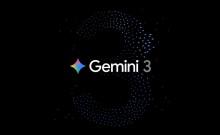The new battery-free communication method addresses the challenges of flexible relay network deployment, a new advancement in 5G communications that will open up a plethora of new opportunities in a variety of industries.
The growing demand for wireless data bandwidth shows no signs of relenting in the near future. Millimeter-wave, a short wavelength spectrum, has demonstrated significant promise in 5G communications and beyond.
Phased array antennas, that work together to boost signal strength in a particular direction, are being developed to take advantage of high-capacity millimeter-wave frequencies. The current technology is limited to line-of-sight spreading.

As a result, relay nodes are taken into account for non-line-of-sight communications. While relaying can improve bandwidth, coverage, and reliability, it can also be difficult to deploy a relay network in a flexible manner. Power supply is a major challenge in relay networks. A typical relay node either has its own power supply unit or is powered by an external source.
A team of scientists led by Prof. Kenichi Okada from Tokyo Tech has proposed a wirelessly propelled 28-GHz phased-array relay transceiver for the 5G network. "Backscatter communication harvests energy from incident signals and reflects back portions of the same signals while modulating the data. Backscatter up-converts the 5G New Radio (5G NR) spectrum at 4GHz and transmits at 28GHz in this design," explains Okada.
The transmitter also functions as a phase shifter, changing the phase of an incoming signal. The transmitter's back-scattering and phase-shifting capabilities enable beamforming, which allows an array of antennas to be controlled to transmit signals in a specific direction. As a result, data is transmitted more efficiently and with less interference.

Another critical feature of the transceiver is the receiver and rectifier operation. A modulated version of itself is split and recombined with an incoming beam by the rectifier. With the 24 GHz WPT signal, it also functions as a full-wave rectifier.
"The proposed battery-free transceiver enhances 5G connectivity by serving as a repeater between indoor and outdoor environments. This, in turn, will improve user experiences and create new opportunities for operational efficiency in internet-of-things, industrial automation, and new communication services," says Okada.

















